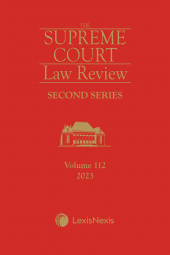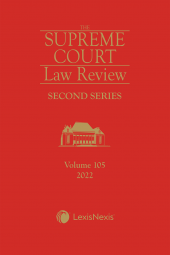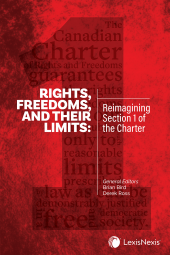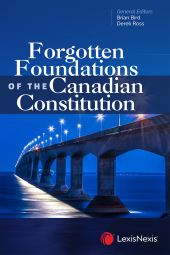Supreme Court Law Review, 2nd Series, Volume 112
One Year Subscription Only Terms
Subscribers receive the product(s) listed on the Order Form and any Updates made available during the annual subscription period. Shipping and handling fees are not included in the annual price.
Subscribers are advised of the number of Updates that were made to the particular publication the prior year. The number of Updates may vary due to developments in the law and other publishing issues, but subscribers may use this as a rough estimate of future shipments. Subscribers may call Customer Support at 800-833-9844 for additional information.
Subscribers may cancel this subscription by: calling Customer Support at 800-833-9844; emailing customer.support@lexisnexis.com; or returning the invoice marked 'CANCEL'.
If subscribers cancel within 30 days after the product is ordered or received and return the product at their expense, then they will receive a full credit of the price for the annual subscription.
If subscribers cancel between 31 and 60 days after the invoice date and return the product at their expense, then they will receive a 5/6th credit of the price for the annual subscription. No credit will be given for cancellations more than 60 days after the invoice date. To receive any credit, subscriber must return all product(s) shipped during the year at their expense within the applicable cancellation period listed above.
Product description
When can the state place limits on basic human rights? This is a fundamental question for any liberal democracy.
In Canada, for rights and freedoms guaranteed by the Canadian Charter of Rights and Freedoms, the answer is found in section 1 of this constitutional document. Section 1 provides that the state may only subject Charter rights and freedoms to limits that are “reasonable”, “prescribed by law”, and “demonstrably justified in a free and democratic society”.
But interpreting these standards has proven a difficult task, one which courts, decisionmakers, and legislatures have wrestled with over the first four decades of Charter jurisprudence.
This collection offers fresh, innovative, and insightful perspectives on these challenges, and on the proper scope, contours, and limits of rights and freedoms. It will be of value to jurists, scholars, governments, lawyers, students, and litigants alike.
Table of contents
Foreword: Beyond Proportionality—John Borrows
Table of Cases
Rights, Freedoms, and their Limits: Reimagining Section 1 of the Charter: An Introduction—Brian Bird and Derek Ross, General Editors
PART I: THE FREE AND DEMOCRATIC SOCIETY
Are Pluralism and Antifragile Tolerance Essential in a Free and Democratic Society?—The Honourable Peter Lauwers
Legislative Reasoning, Participation and the Inescapable Normativity of the “Free and Democratic Society”—Benjamin Woodfinden
What Oakes Could Have Said (or How Else to Read a Limitation Clause)—Grégoire Webber
PART II: LIMITING RIGHTS: WHAT’S “REASONABLE”?
Proportionality Maxims and Best Practices: An Essay on Using Oakes to Achieve a Post-Oakes Future—Dwight Newman, KC
Renewing Freedom of Expression, Part Two: From the Contextual Approach to Proportionality Balancing—Jamie Cameron
Revisiting the Analytical Distinction Between Section 7 and Section 1 of the Charter: Legislative Objectives, Policy Goals and Public Interests—Debra M. Haak
Section 15(1): Precedent and Principles—Hoi Kong
PART III: REIMAGINING THE APPROACH TO SECTION 1 IN ADMINISTRATIVE LAW
Minimal Impairment: An Unreasonable Measure of the Justifiable Limits of Rights—Marcus Moore
Proportionality—More than Balancing: Exploring the Doré Framework in Light of Section 1—Carmelle Dieleman
The Future of Section 1 in the Law of Judicial Review—Mark P. Mancini
SPECIAL ESSAY
Special Essay – Charter Metamorphosis: 1982-2022—The Honourable Ian Binnie
 Lexis Nexis
Lexis Nexis 


